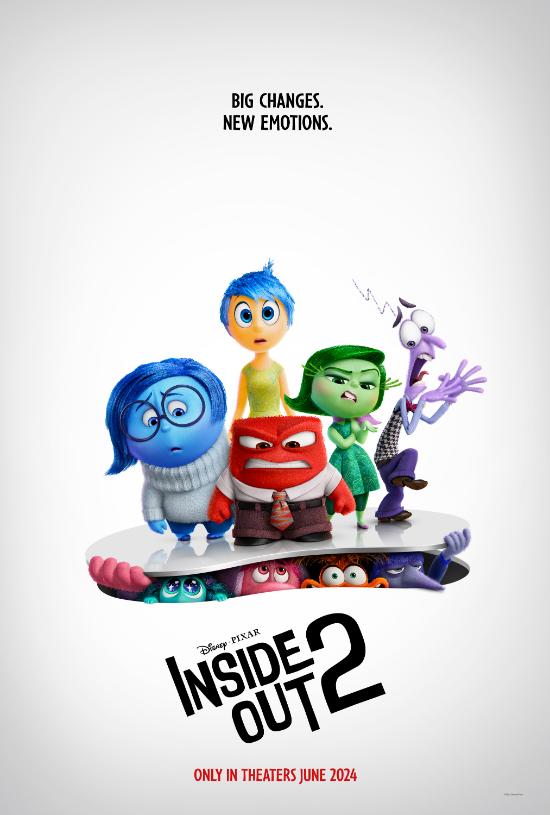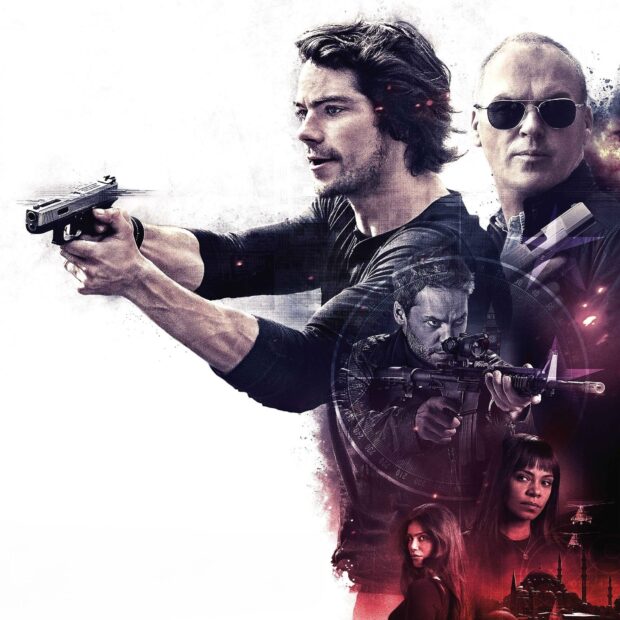Ennui is a metatextual audience surrogate as Pixar’s mediocre run continues.
Puberty arrives not with a bang but a bureaucracy, as Inside Out 2 trades the rich inner chaos of childhood for a corporate re-org where every emotion has to wear a lanyard and file paperwork. It’s less an emotional coming-of-age than a strategic acquisition, and unfortunately, the new management mostly echoes the old memos.
Pixar’s follow-up to its 2015 darling is too tidy by half – an anxious sequel about anxiety that seems afraid to let anything truly unravel. Joy (Amy Poehler) is once again our manic project manager of the mind, and while her power grab in the first film led to an existential odyssey, this time her downfall is a desk-clearing exercise. The sequel’s big idea is the arrival of Anxiety (Maya Hawke), a chipper yet brittle control freak who’s basically a walking cautionary tale for helicopter parenting. She’s got a plan. She’s got projections. She’s got a colour-coded spreadsheet of worst-case scenarios. What she hasn’t got is the nuance of the original’s emotional interplay.
Inside Out 2 zeroes in on one emotion like it’s a prestige character study, but forgets that what made Inside Out tick was how Joy’s dominance only made sense in contrast with Sadness, Anger, Disgust, and Fear. Here, the ensemble is sidelined in favour of Hawke’s caffeinated performance and a plot that gently swirls down the same memory tubes as last time. Even Anxiety’s uprising mirrors Joy’s arc beat for beat – a hostile takeover, an exiling of the old regime, a last-minute redemption – only this time the stakes feel smaller and the introspection more scripted.
The new emotions arrive with the kind of big splash that evaporates instantly. Envy, Embarrassment, Ennui – all charmingly designed, but narratively ornamental. Ennui, in particular, plays like someone watched Fleabag and said “what if we made her French and did nothing else?” These characters exist to pad out trailer moments, not to challenge or reshape the dynamics. The film introduces a complex emotional cocktail and then only pours Anxiety a drink.
It also raises some fundamental questions about the promotion structure in the Head Office of the Mind. If this is a corporate reshuffle, shouldn’t these new emotions be reporting in to someone? Anxiety has more than a little Fear about her, but insists on autonomous control. Ennui could easily be a cynical offshoot of Disgust. Envy could fold neatly under Sadness or Anger. Embarrassment practically begs to be a junior partner in Fear’s department. But the hierarchy is abandoned in favour of novelty – or, more cynically, sequel logistics. And for all the talk of developmental milestones, where is Joy’s new counterpart? Puberty doesn’t just bring nerves – it brings intensity. Passion. Obsession. And yes, even the early stirrings of sexual identity (although I can’t seriously see Pixar willingly embracing that particular pandora’s box). But there’s no space here for desire, awkward crushes, or even the hormonal confusion that might have brought some texture to the emotional shift. There’s not even space for a glimpse of an amusingly padlocked or barricaded door marked libido. Nostalgia gets a door though (i suppose it is Disney’s primary source of revenue nowadays). Pixar was never likely to go full Doctor Ruth, of course, but the sanitised, single-issue approach makes the teenage mind feel less like a hormonal storm and more like a staff meeting.
Even the landscape of Riley’s mind feels less expansive this time around. The original treated the psyche as an exploratory playground – metaphorical, yes, but rich with abstract ideas and emotional consequence. Here, the mind is more mall than maze, populated with repressed memories and junk drawers that function mostly as plot contrivances. There’s no real sense of discovery – only retrieval. And when it’s not recycling ideas from the original, it’s lifting plot mechanics wholesale from Toy Story 4, with Joy cast as yet another nostalgic hoarder of outdated beliefs.
It also quietly introduces a continuity headache it has no interest in solving. If these new emotions are a natural stage of cognitive development, where are they in the adults we’ve already seen? Riley’s parents – whom we spent time inside this time and last time – still appear to operate on the original basic five. Are they emotionally underdeveloped? Have their new emotions been outsourced? Did they get laid off in a round of budget cuts? Or are we simply meant to believe that only Riley gets this internal expansion pack? For a film so keen on mental mechanics, it’s surprisingly uninterested in its own world-building.
It’s not that Inside Out 2 is devoid of charm – far from it. It’s gorgeously animated, cleverly scripted in places, and still packs the occasional emotional wallop. But the needle doesn’t move. The joy-sadness binary that powered the first film is replaced with a mood board of unease, and the film seems unsure whether it wants to reassure kids that anxiety is manageable or caution them that it’s inevitable. The resolution is Pixar by numbers – a group hug, a self-acceptance mantra, a gentle nudge toward growth. Fine. Familiar. Forgettable.
Maybe the most telling thing is how little of Riley’s new world – the external one – matters. Her hockey camp, her friendships, her growing self-awareness: all reduced to background noise in favour of internal mechanics. Inside Out 2 wants to be profound about the messiness of adolescence but doesn’t trust it enough to let things stay messy. It chooses containment over complexity, message over meaning.
And so, rather than capturing the terror and thrill of growing up, it offers a neat allegory about inner conflict that resolves itself with barely a scuff. A sequel that’s supposed to be about emotional maturity plays it safer than the original – a retreat inward that’s so focussed on a single issue it forgets that personality, like Riley herself, is supposed to be multidimensional.









